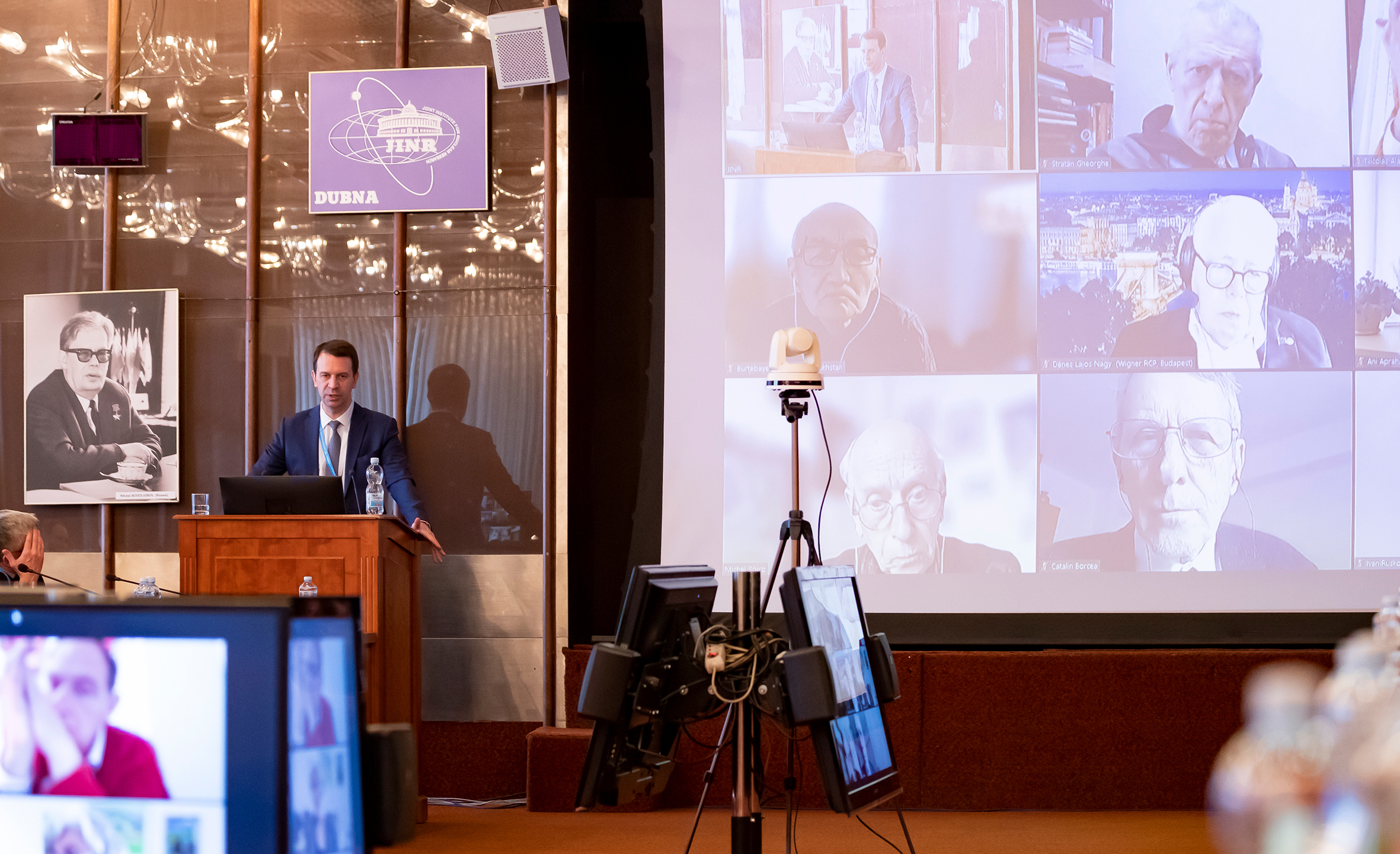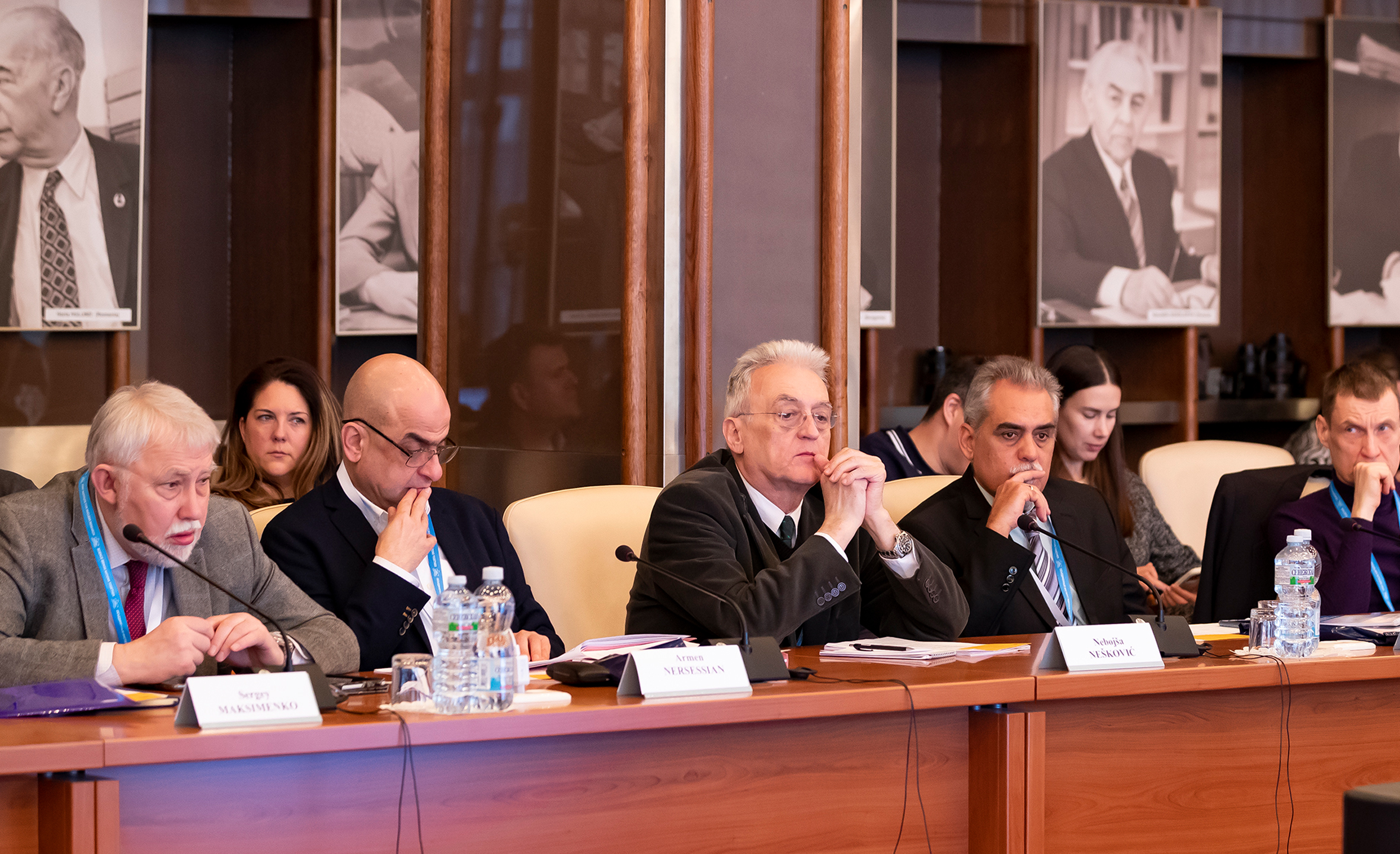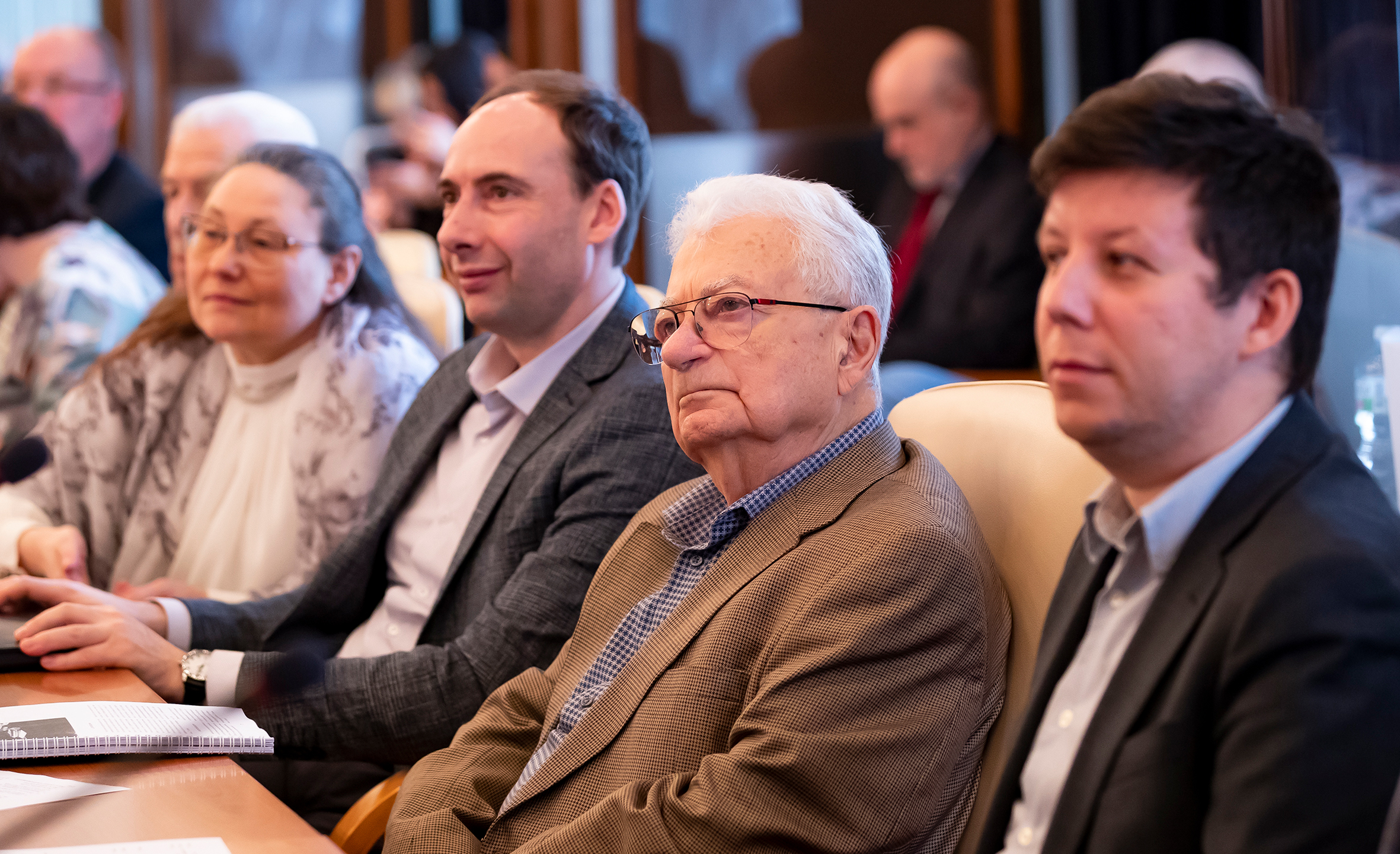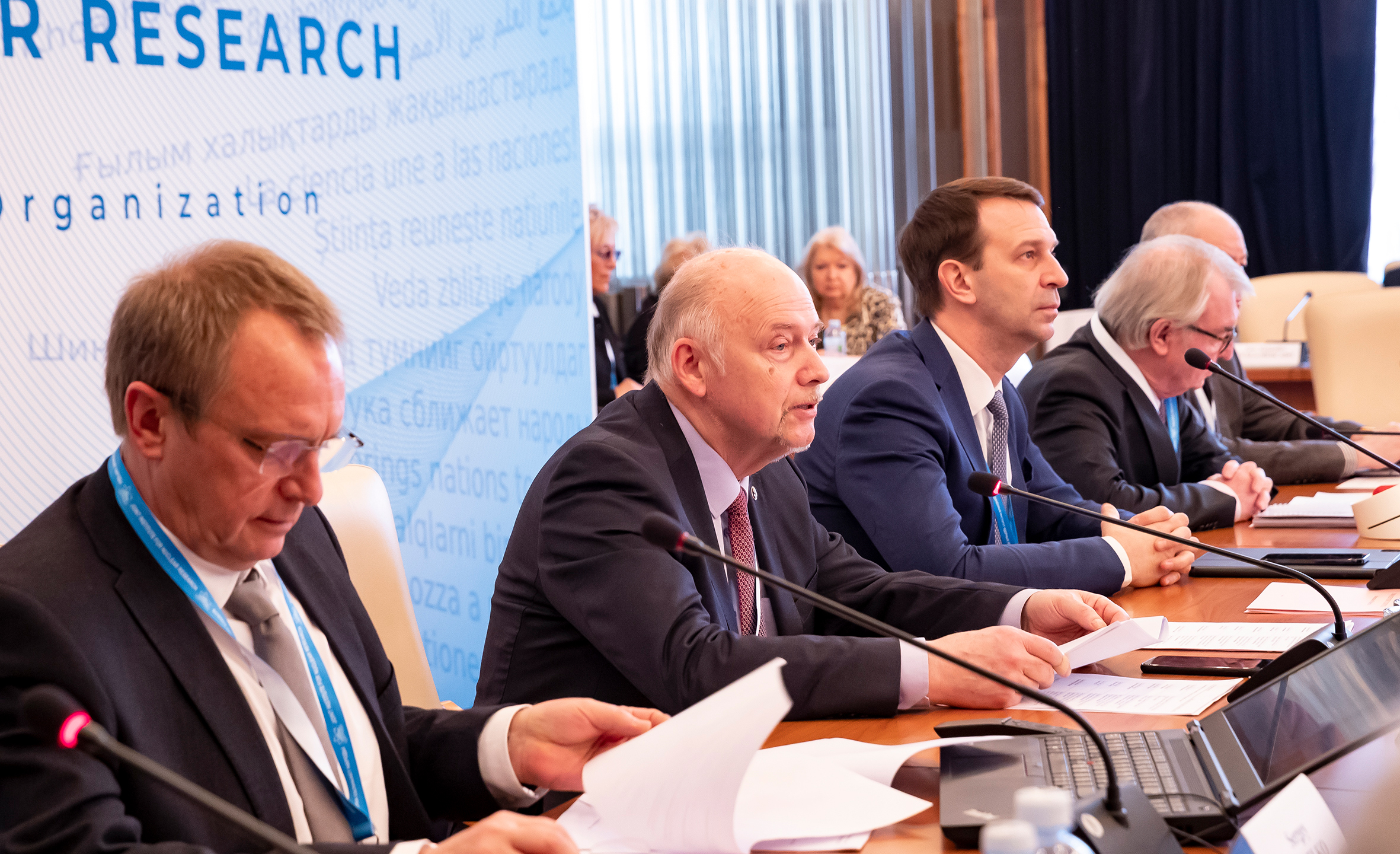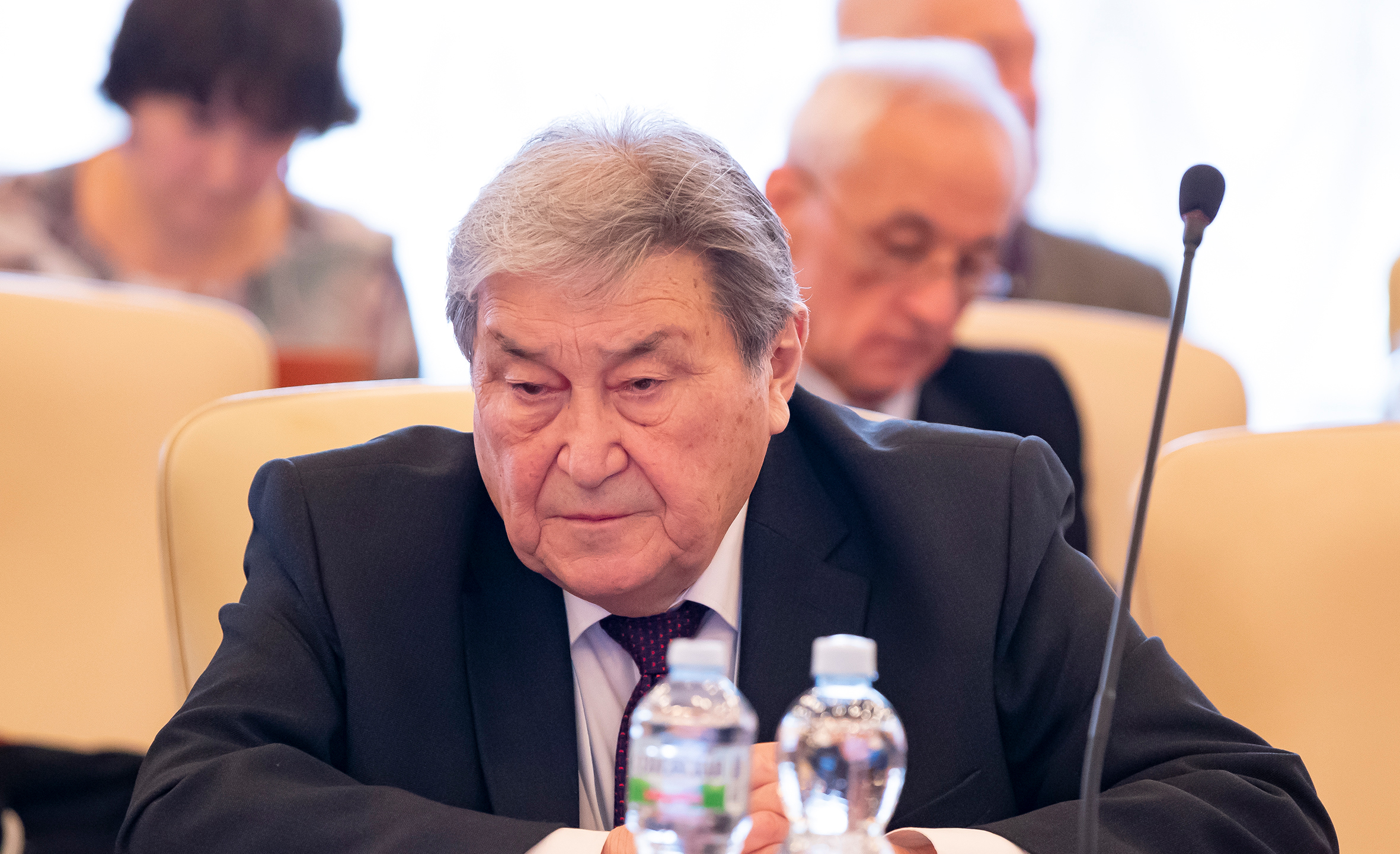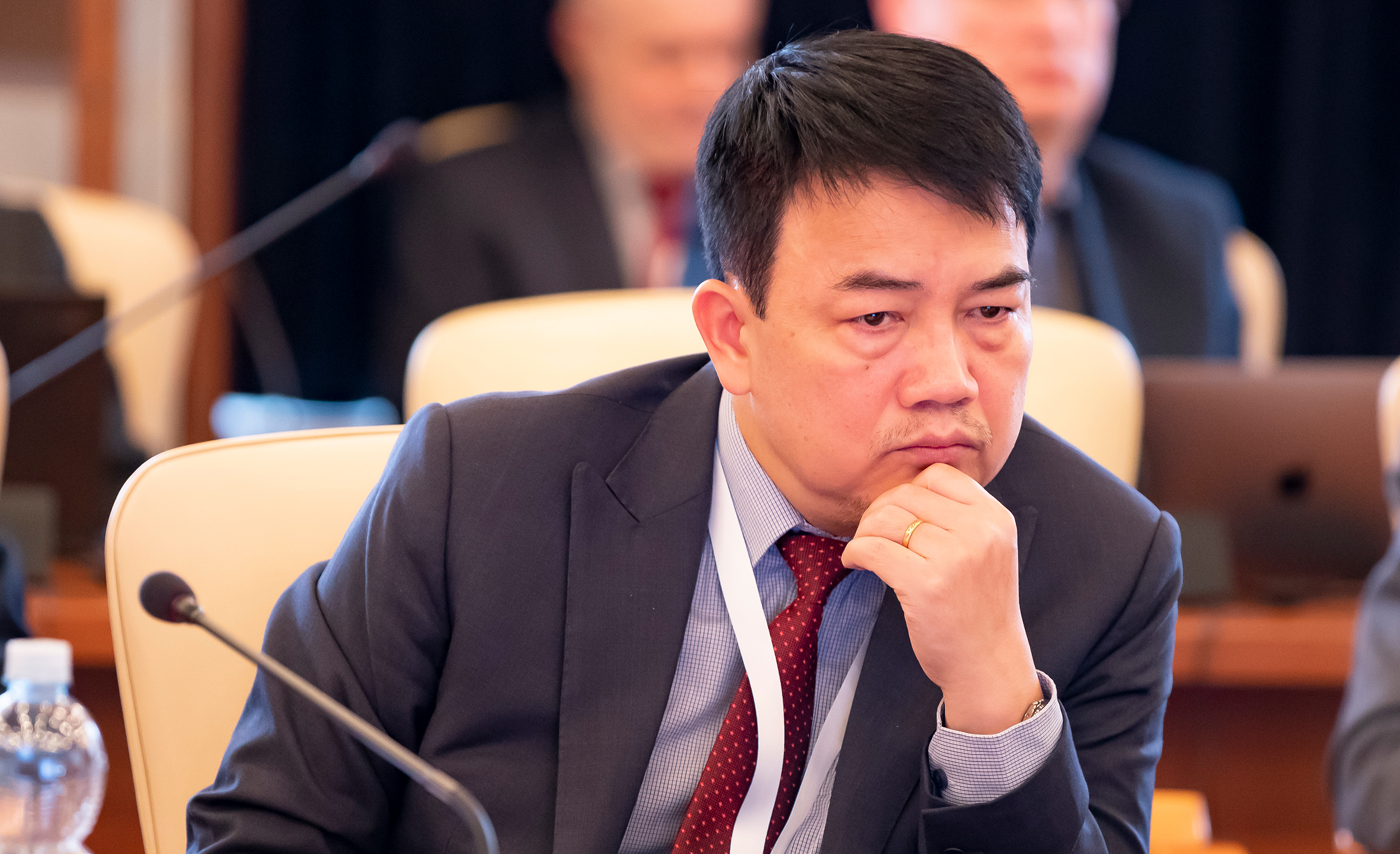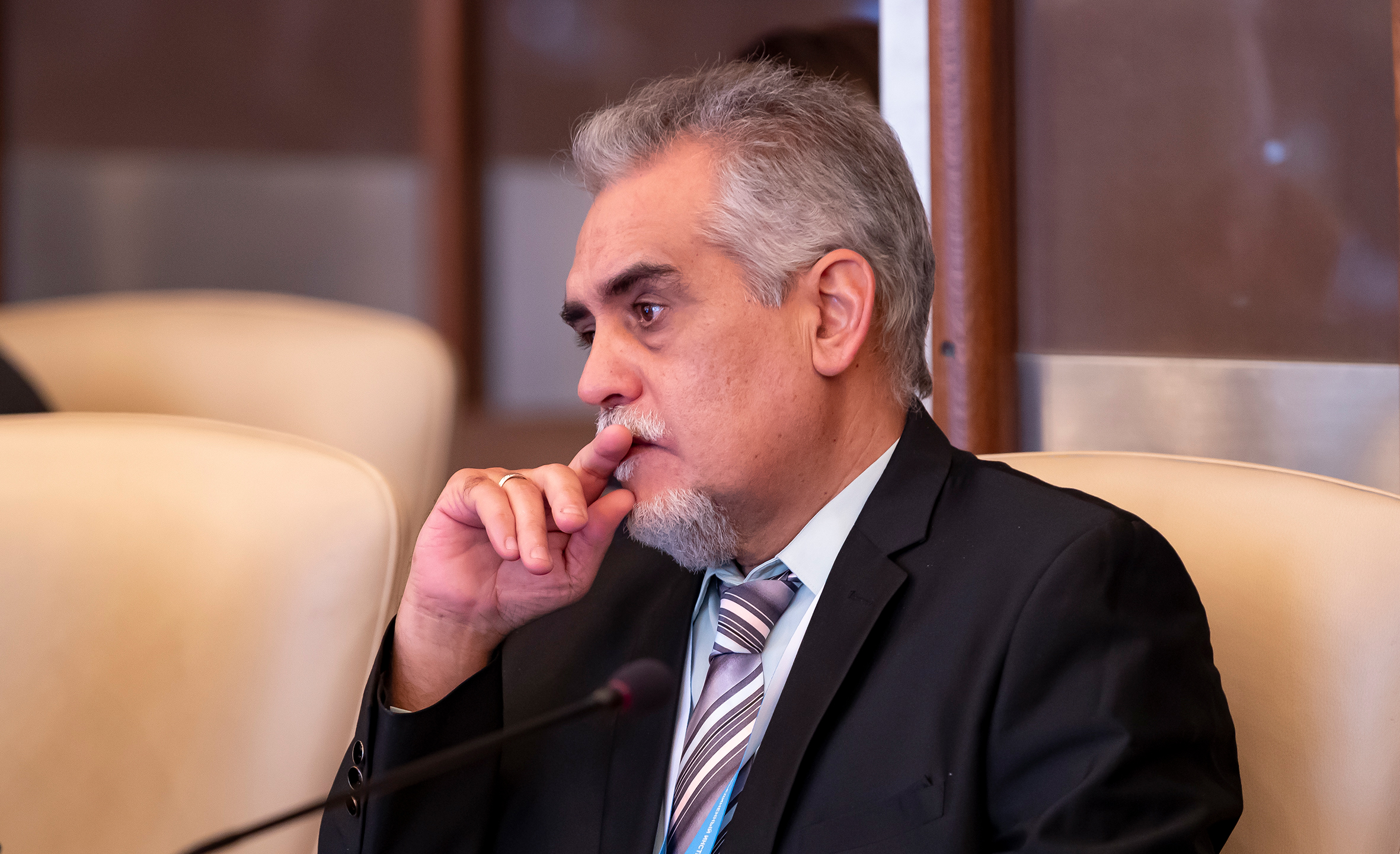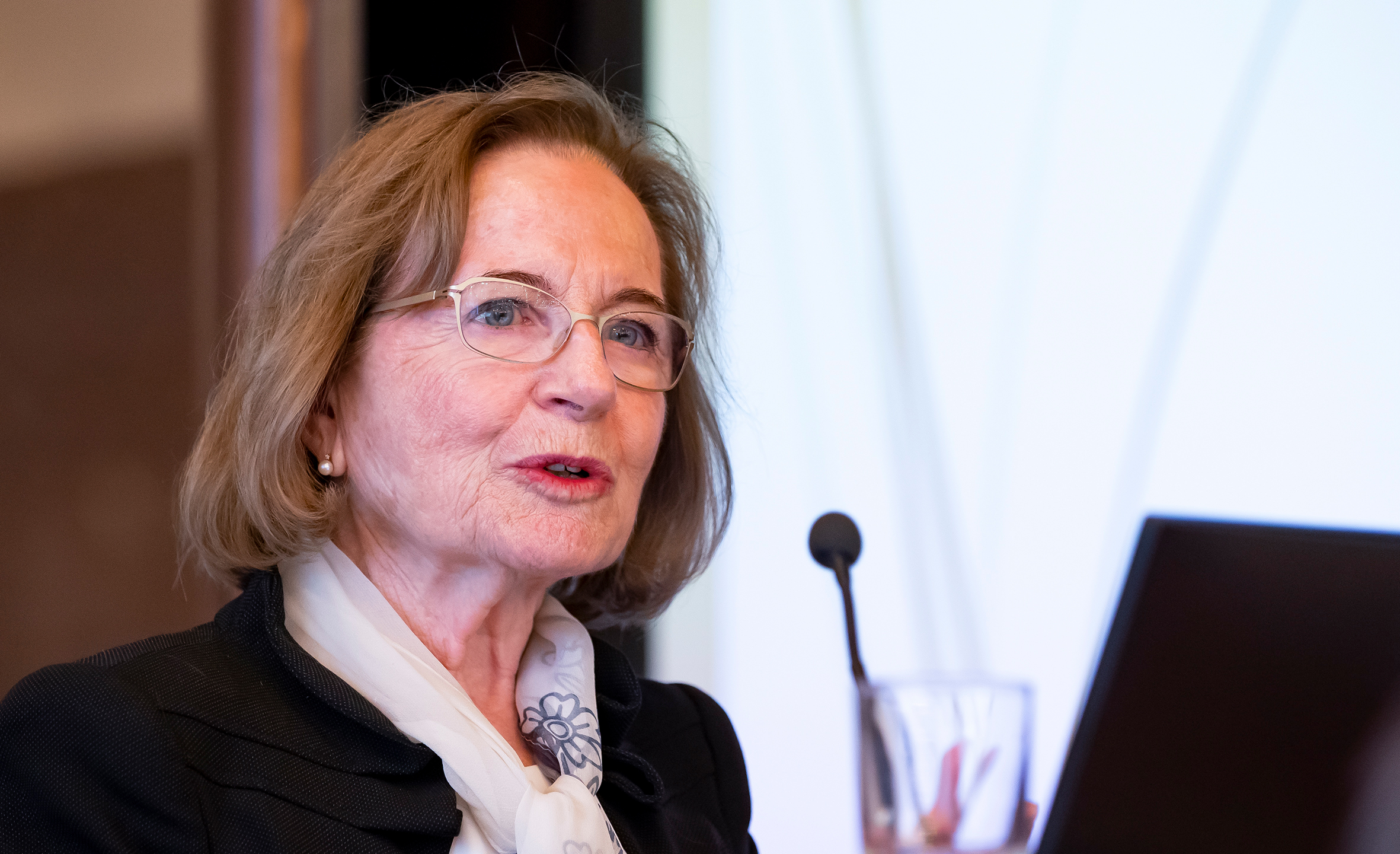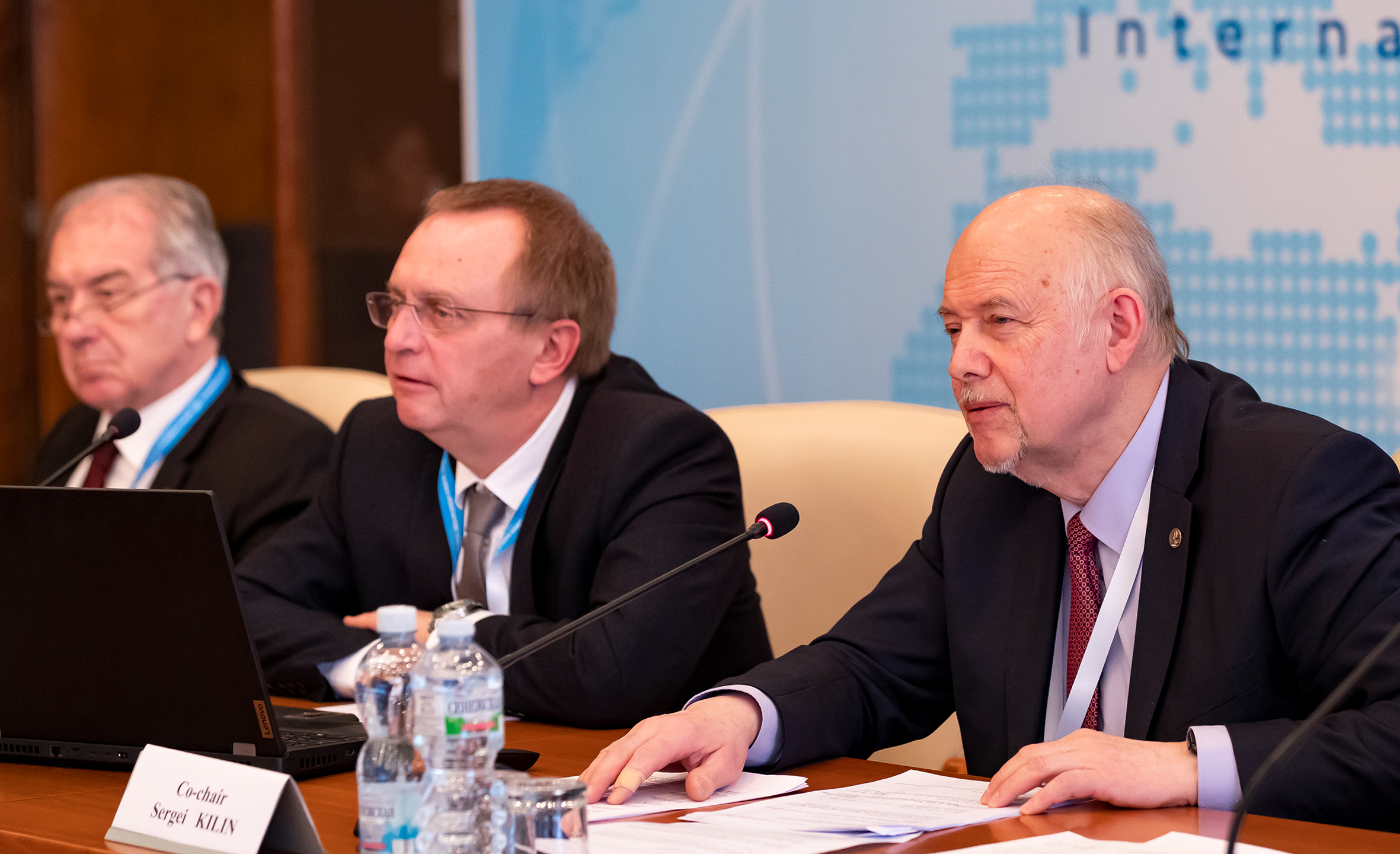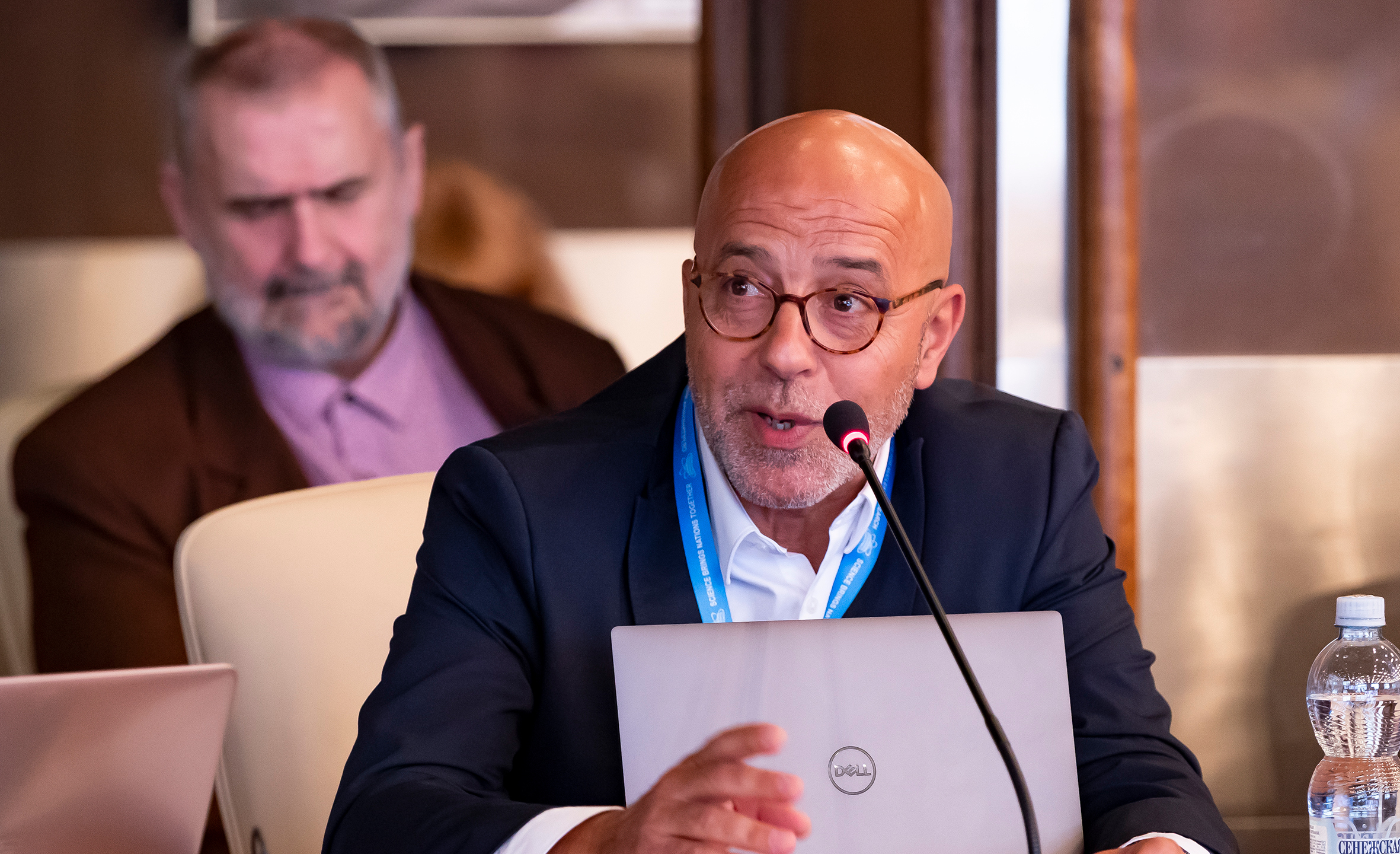JINR Scientific Council with new members and plans
News, 17 February 2023
On 16 February, the 133rd regular session of the Scientific Council of the Joint Institute for Nuclear Research started. A new membership of the Council is taking part in the event. It was approved for 5 years at the meeting of the Committee of Plenipotentiaries (CP) of the Governments of the Member States in November 2022. The members of the Council considered and discussed the final version of the new Seven-Year Plan for the JINR Development, which will be approved in March by the Committee of Plenipotentiaries. A festive ceremony of signing the agreement with the National Council for Science and Technology of Mexico (CONACYT) took place.
The 133rd session of the Scientific Council was chaired by Sergey Kilin. Director of the Joint Institute Grigory Trubnikov opened the event with his report. “We are proud of the memberships of the Scientific Council and the Programme Advisory Committees, which united prominent scientists from leading research centres from all over the world,” Grigory Trubnikov highlighted.
In his report, the Director of the Institute reviewed the most important scientific results achieved since the session of the Scientific Council in September. The Institute has obtained striking results in the fields of theoretical physics, radiation research in life sciences, and IT technologies. Scientific groups of the Institute continue working in the CERN experiments.
Specialists will complete the construction of the NICA Complex in July. The fourth and the longest in the history of VBLHEP commissioning cycle at NICA was the most striking result since the previous session of the Council. As a result, during the run of the BM@N Experiment, the first one of the NICA Project, scientists collected more than 550 million events. The commissioning cycle lasted more than 3,200 hours in total. Scientists started a deep analysis of the data obtained. They hope to present the first results this summer. At the same time, specialists are actively working on the MPD Detector. In November, specialists tested the first elements of electron cooling system (ECS) of the NICA Collider. In spring, employees of the Laboratory of High Energy Physics are going to assemble this system.
Scientists of the Laboratory of Nuclear Reactions are preparing for the synthesis of element 120 of the Periodic Table. In experiments of 2022, researchers synthesised three new isotopes. The experimental results are proving the theoretical predictions of specialists. Experts are profoundly modernising the U400M Accelerator. It is expected that the team of FLNR JINR will obtain the first beams at it at the end of 2023. Specialists are creating the DC-140 Accelerator and reconstructing its experimental hall.
The regular expedition to construct the Baikal-GVD Neutrino Telescope starts these days on Lake Baikal. The team of the megascience project is going to install almost 700 optical modules, which will include 2 clusters. As planned, in 2022, specialists analysed data obtained at the Telescope during 2018 – 2022. As a result, they selected 11 candidates for ultrahigh-energy neutrinos. An article about this event was accepted for publication in the Physical Review D journal.
In November 2022, scientists of the Laboratory of Information Technologies completed the next stage of the development project of the Govorun supercomputer. It significantly increased its performance. Specialists of the Laboratory continue working on the development of cloud infrastructure. Employees of the Laboratory of Neutron Physics have performed significant research in the field of materials science. Researchers continue developing the spectrometer complex at the IBR-2 Reactor. The new NEPTUNE neutron source is under the development.
In 2022, about 400 students visited JINR within the framework of different educational programmes of the Institute, the network of JINR Information Centres is extending, the Institute is actively engaged in educational activities.
Under its motto “Science brings nations together”, JINR is extending its cooperation with a number of countries. Within the current session of the Scientific Council, a festive ceremony of signing the agreement between the Institute and the National Council for Science and Technology of Mexico (CONACYT) was held. The document consolidates the areas of mutual scientific interest between JINR and Mexico. It also defined concrete steps to intensify future cooperation, including a creation of the Joint Coordination Committee. In January-February, a series of bilateral topical meetings with scientific institutes and Universities of China is taking place to systematise the already existing large-scale cooperation and prepare an agreement on the JINR-China cooperation and research coordination at high levels.
JINR Director Grigory Trubnikov also presented the updated draft of the new Seven-Year Plan for the Development of JINR for 2024 – 2030, which took into account the recommendations of the Members of the Scientific Council proposed at its previous session and the results of the Plan’s discussion at the CP session in November. Thus, the Institute’s participation in external experimental collaborations was prioritised. Participants of the event analysed possible risks of the Plan implementation and proposed ways to prevent them.
On the same day, the Chairmen of the Programme Advisory Committees delivered their reports on the results of meetings of the Advisory Bodies held in January. The elections of the FLNP and MLIT Directors took place.
The session of the Scientific Council will be continued on 17 February. Young JINR scientists will deliver their reports recommended by the PAC. The awarding ceremony of the V. Dzhelepov Prize to Pavel Apel will take place. In addition, the jury’s decision will be announced to participants on awarding JINR annual prizes for the best scientific, scientific and methodical, and scientific and technical applied works. General discussion and adoption of the resolution will conclude the session.


